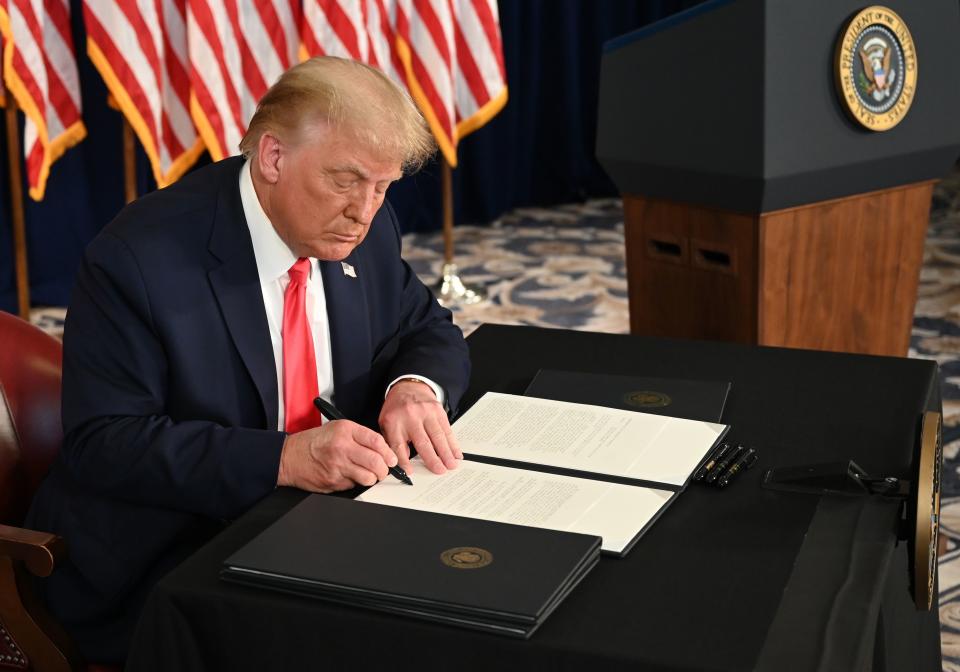Coronavirus stimulus checks: The president 'would love to see' a second round
Among the executive orders President Donald Trump issued over the weekend to address the pandemic, none involved stimulus checks, but the president still supports a second round in another stimulus bill, according to a White House official.
“The White House is still motivated,” Press Secretary Kayleigh McEnany told reporters on Monday when asked how pressing the next stimulus bill is. “The president would love to see the direct payments to Americans. The president would love to see the school funding.”
Democrats and Republicans in Congress haven’t been able to reach a deal after two weeks of negotiations. Their core disagreements are about the overall funding for the bill — the Democrats’ HEROES Act is worth around $3.4 trillion while the Republicans' HEALS Act is worth $1 trillion — as well as provisions involving liability protection for business and schools, additional unemployment benefits, and more.

While the president addressed some of those issues in his executive orders he issued over the weekend, stimulus checks weren’t included because the president can’t legally include this popular relief aid in his executive orders.
Read more: Coronavirus stimulus checks: Here's why you can't find out your payment st
The money he’s using for the unemployment insurance executive order is reprogrammed funds that Congress has already appropriated for disaster relief. But he couldn’t use that money for purposes such as stimulus checks which, in practice, are tax rebates, according to Seth Hanlon, a tax policy expert at the Center for American Progress
“The rules that Congress provided for the FEMA money do allow some flexibility on using it to provide aid to the unemployed,” Hanlon said. “It’s clearly in the domain of Congress — not the president — to authorize the direct payment of money out of the Treasury.”
What do Republicans and Democrats say on stimulus checks?
The HEROES Act — the Democratic stimulus proposal — and the HEALS Act — the Republicans’ plan — both outline similar ideas of what the next round of stimulus checks should look like.
The Republican plan unveiled at the end of July proposes sending a second wave of stimulus checks of up to $1,200 to Americans, plus an additional $500 for any dependent — a key departure from the first round.

The Democrats’ stimulus check plan under the HEROES Act also proposed that taxpayers would receive $1,200 per individual and an extra $1,200 dependent bonus for any dependent claimed on their tax return.
Under the Republican proposal, those without a Social Security number and nonresident aliens — those who aren’t a U.S. citizen or U.S. national and don’t have a green card or have not passed the substantial presence test — would not be eligible for a payment.
By contrast, the Democrats’ plan proposes sending payments to Individual Taxpayer Identification Number (ITIN) filers and their families. The change would mean that more than 4.3 million adults and 3.5 million children would be eligible for the payment, according to ITEP.
Denitsa is a writer for Yahoo Finance and Cashay, a new personal finance website. Follow her on Twitter @denitsa_tsekova.
Read more:
Rich Americans' pullback in spending is hurting the economic recovery
Even as GDP tanked, personal income grew thanks to government support
Read more personal finance information, news, and tips on Cashay
Follow Yahoo Finance on Twitter, Facebook, Instagram, Flipboard, SmartNews, LinkedIn, YouTube, and Reddit.


